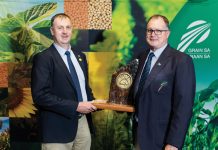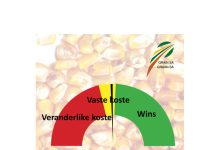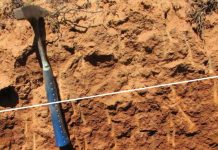This article is the 24th of a series of articles highlighting a specific crop species that can play an imperative role in conservation agriculture (CA)-based crop-pasture rotations. Besides improving the physical, chemical, hydrological and biological properties of the soil, such species, including annual or perennial cover crops, can successfully be used as animal feed.
Livestock production systems are in many ways dependent on the utilisation of forage species, in this case as an annual cover crop, and can therefore become an integral component of CA-based crop-pasture rotations.
It is imperative to identify a plant species fulfilling the requirements of a dual purpose crop, i.e. for livestock fodder and/or soil restoration. This article focuses on an annual winter grass cover crop with the potential to be used to improve soil conditions and to provide high quality forage for ruminants.
Lolium multiflorum L., annual ryegrass or eenjarige raaigras
Annual ryegrass is a cool season (winter) evergreen tufted grass. There are two varieties of annual ryegrass known by their common names as Italian ryegrass (Lolium multifolrum var. italicum) and Westerwolds ryegrass (Lolium multiflorum var. westerwoldicum).
Italian ryegrass varieties are generally more persistent than Westerwolds ryegrass varieties. Westerwolds ryegrass is a very rapid growing, leafy, extreme annual which was selected from Italian ryegrass.
Italian and Westerwolds ryegrasses are not easily distinguishable from each other on the basis of their morphological characteristics. Certain cultivars have the ability to persist into a second season and be regarded as a biennial in moderate climatic regions.
These two groups of ryegrass cultivars can be divided further into two more groups, namely diploids and tetraploids. Tetraploid ryegrass cultivars have longer, broader leaves, less stems which are much thicker and bigger seeds than diploid ryegrass cultivars.
There are a number of different cultivars available in South Africa, as this species is most commonly used in the dairy industry because of its high nutritional value. Annual ryegrass has a dense shallow root system; however, this extensive root system tolerates compacted soils and makes it an effective catch crop for excess nitrogen.
Agro ecological distribution
This species is adapted to temperate climates and is mostly cultivated in the high rainfall regions of South Africa. When produced under dry land, rainfall in excess of 850 mm will be sufficient for optimal to good production.
It is also grown very well under irrigation. Annual ryegrass has a high requirement for fertility and moisture. The grass grows well on a variety of soils but does extremely well on deep fertile soil with a capacity to hold moisture.
Ryegrass seedlings are extremely sensitive to heat and drought, because very high summer temperatures may have a detrimental effect on the production and persistence of the species.
Management and utilisation
The best time to establish this grass is in autumn, from mid-February to mid-April depending on the climatic region. Westerwolds ryegrass cultivars can be sown earlier than Italian ryegrass cultivars.
Seeding rates for these different cultivar groups are based on their seed size. Diploids can be planted at 20 kg/ha using a drill seeder, but if seed is broadcasted 25 kg/ha is sufficient.
Tetraploids on the other hand, will require more seed, i.e. 25 kg/ha (drill seeded) and 30 kg/ha (broadcast). A fine firm seedbed is required and consolidating (rolling) the seedbed before and after seeding will promote a good stand.
If aerially seeded, increase seeding rates at least 30% compared to broadcast seeding rate. You can overseed into maize at or later than last cultivation or plant right after silage harvest. When seeding into soybeans, overseed at leaf-yellowing stage or later. When overseeding, it is an option to include an annual legume (e.g. Vicia spp.) if low soil nitrogen (N) levels are expected.
Take note that certain residuals of herbicides used for grain crops can kill ryegrass. If ryegrass is considered as a cover crop, make sure the herbicides used in your grain cropping system are not detrimental.
It is essential that the soil nutrient status especially phosphorus, potassium, calcium and magnesium levels are rectified before planting. Good soil pH will ensure good soil nutrient availability. Fortunately, when ryegrass is used as a cover crop on soil after a grain crop, fertility is often not a problem.
When ryegrass is sown, these stands will primarily bind and protect the soil followed by the utilisation by livestock should the need exist. It is known that ryegrass, once sown can be grazed six to ten weeks following planting.
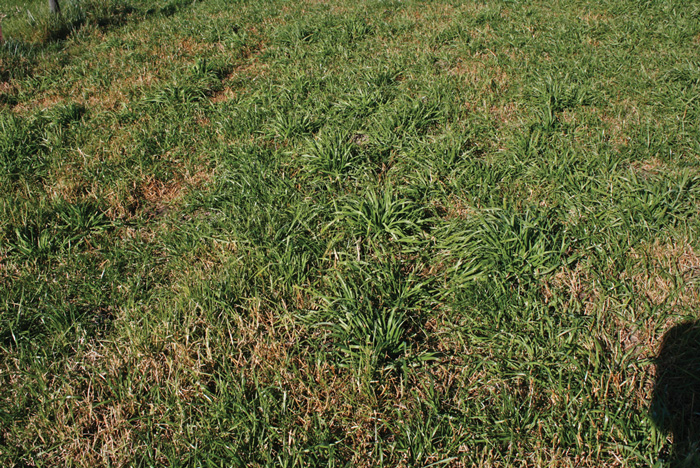
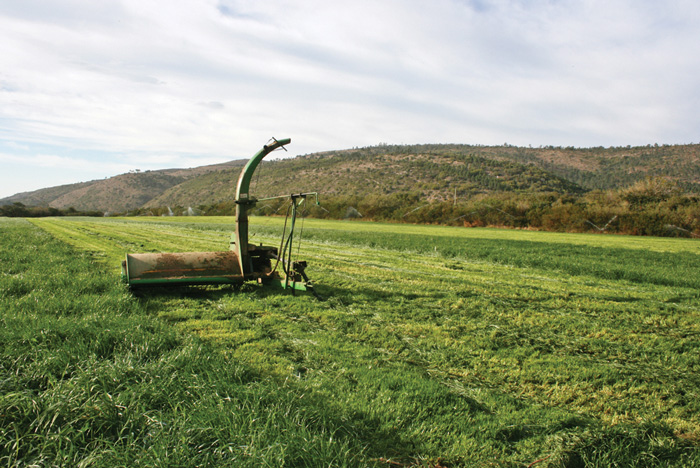
Soil conservation and health benefits
Annual ryegrass has many cover crop benefits. When it is sown with legumes and other grasses it is a good weed suppressor, due to its ability to establish quickly which provides early season weed control.
This species has an extensive root system that binds the soil extremely well. With a root system that establishes quickly in waterlogged, poor and even rocky soils it prevents a significant amount of erosion.
In addition to the binding root system the dense shallow root system improves water infiltration and enhances soil tilth. Ryegrass has a rapid aboveground growth which helps supply a good source of organic matter which can be good mulch that can support its weed control and soil moisture preservation ability.
Since this species is a high N user, ryegrass can capture leftover N, convert it to organic matter and reduce nitrate leaching; therefore it is an excellent nutrient catch crop. Ryegrass can also be seen as a nurse/companion crop, especially when perennial subtropical species are planted in autumn for a longer grass ley crop period of three to five years depending on the planned period of rest for the grain crop field. The ryegrass then protects the seedlings of the slower growing grasses or legumes from cold damage for example.
Management challenges
Often ryegrass grows very strongly at the time of seeding a subsequent grain crop. It will be essential to eradicate the grass and it can be done mechanically by mowing the material before seed set. This can be done prior to spraying the ryegrass with a non-persistent contact herbicide, although one can experience an incomplete kill and/or resistance to glyphosate.
Fortunately, high temperatures damage any regrowth if the grain crop is planted towards November when ryegrass growth generally ceases in warmer climates.
To minimise N tie-up as the biomass decomposes, wait a few weeks after incorporation before you seed a subsequent crop. Growing ryegrass with a legume such as Vicia or Trifolium spp., would minimise the N concern. Allowing the cover residue to decompose a bit, the seedbed will be easier to manage.
Animal production aspects
Ryegrass can be used in many ways. Since it has a high moisture content if cut, the best way to preserve it is through silage or haylage. The most economical way to utilise it as a dual purpose cover crop, is to graze it when there is sufficient growth, but it should not be grazed intensively because regrowth is important to protect the soil during the winter months.
Ryegrass can have a good grazing value with crude protein values of between 20% – 24%. The dry matter digestibility of annual ryegrass, however, is near 80% in the early season of growth particularly in more temperate areas and as the season advances digestibility decreases but may still be greater than 65% for much of the grazing season.
The quality of forage is dependent on the factors that affect the regrowth of grasses such as temperature, water and fertility. The nutritive value of grasses decreases as the production season proceeds, depending on the number of harvests, the length of the harvesting intervals, and the growth stage. This shows that as the plant matures, it becomes more lignified and its nutritive value decreases thus making it less palatable.
Conclusion
It is noted that ryegrass is a very easy grass crop to grow and that it can remove excess nutrients from the root zone and convert it into soil organic matter which will eventually facilitate the storage of nutrients for future use by successional crops.
Subsequently annual ryegrass cultivars have good value for livestock production systems producing highly palatable and digestible forage. With good fertility these species provide rapid growth during periods of cool temperatures and when sufficient soil moisture is available, especially under irrigation systems. These attributes make annual ryegrass an effective management tool for CA-based crop rotation systems.
For more information, contact Dr Wayne Truter at wayne.truter@up.ac.za, Prof Chris Dannhauser at admin@GrassSA.co.za, Dr Hendrik Smith at hendrik.smith@grainsa.co.za or Mr Gerrie Trytsman at gtrytsman@arc.agric.za.
References
Dovrat, A. 1993. Irrigated forage production. Elsevier Science Publishers B.V.: Amsterdam, The Netherlands.
Dickinson, EB, Hyam, GFS, Breytenbach, WAS, Metcalf, WD, Bassoon, WD, Williams, F, Scheepers LJ, Plint, AP, Smith, HRH, Smith, PJ, Van Vuuren, PJ, Viljoen, JH, Archibald, KP and Els, JN. 2004. Kynoch Pasture handbook. Kejafa Knowledge Works: Maanhaarrand.
Fulkerson, WJ, Slack, K, Hennessy, DW and Hough, GM. 1998. Nutrients in ryegrass (Lolium spp.), white clover (Trifolium repens) and kikuyu (Pennisetum clandestinum) pastures in relation to season and stage of regrowth in a subtropical environment. Australian Journal of Experimental Agriculture, 38:227 – 240.
Rhind, JM and Goodenough, DWC. 1973. Grass breeding information series 3. The Ryegrasses. Department of Agricultural Technical Services: Natal region.




